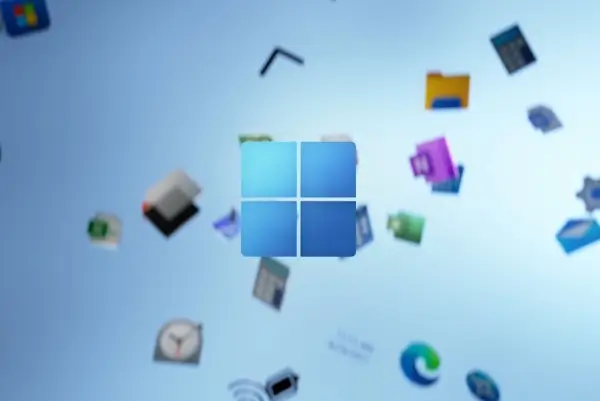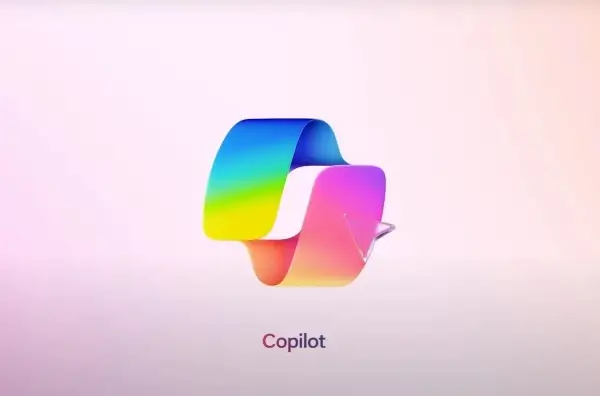DFS Replication Advanced Settings and Features
You can customize or enable the following settings and features in DFS Replication as necessary to design a DFS Replication solution for your organization.
RDC
RDC, which is the basis for DFS replication, is a protocol that can be used to efficiently update files 64 KB or larger over a limited-bandwidth network. RDC detects insertions, removals, rearrangements of data in files regardless of file type, enabling DFS Replication to replicate only the changes when files are updated. To compute the changes to replicate, RDC typically works on an older version of the file with the same name that exists at the appropriate location in the replicated folder tree on the receiving member.
In earlier versions of Windows Server the protocol used to replicate files among folders in a DFS namespace was File Replication Service (FRS). Unlike RDC, FRS copied only entire files, not portions of files. As a result, DFS in earlier versions of Windows is much more bandwidth-intensive than in Windows Server 2008 networks. This change in technology in Windows Server 2008 provides a huge improvement in DFS replication performance, especially across WAN links. Therefore, when planning for DFS, you should plan to upgrade your DFS servers if DFS replication will occur across WAN links.
Note: RDC and small files
RDC is not used on files smaller than 64 KB; in this case the file is compressed before it is replicated. You can also disable RDC on connections that are in a LAN where network bandwidth is not contended.
Cross-File RDC
An additional function of RDC, known as cross-file RDC, can be used to further reduce bandwidth usage. Cross-file RDC is useful when a file exists on the sending member and not the receiving member but similar files exist on the receiving member. Instead of replicating the entire file, DFS Replication can use portions of files that are similar to the replicating file to minimize the amount of data transferred over the WAN. Cross-file RDC can use multiple files as candidate files for RDC seed data.
Replication Schedule and Bandwidth Throttling
DFS Replication supports replication scheduling and bandwidth throttling in 15-minute increments during a seven-day period. When specifying a replication window, you choose the replication start and stop times as well as the bandwidth to use during that window. The settings for bandwidth usage range from 16 kilobits per second (Kbps) to 256 megabits per second (Mbps) as well as full (unlimited) bandwidth. You can configure a default schedule and bandwidth that applies to all connections between members and optionally create a custom schedule and bandwidth for individual connections.
Because members of a replication group are often located in different time zones, it is important to consider the time zones of the sending and receiving members when you set the schedule. The receiving member initiates replication by interpreting the schedule either in Coordinated Universal Time (UTC) or in the receiving member’s local time, depending on which setting you choose. You can choose this setting for the replication group schedule and for custom schedules on individual connections.
Replication Filters
You can configure file and subfolder filters to prevent files and subfolders from replicating. Both types of filters are set on a per-replicated folder basis. You exclude subfolders by specifying their name or by using the asterisk (*) wildcard character. You exclude files by specifying their name or by using the asterisk (*) wildcard character to specify file names and extensions.
Staging Folder
DFS Replication uses staging folders to act as caches for new and changed files to be replicated from sending members to receiving members. Each replicated folder uses its own staging folder, and each staging folder has a configurable quota. The quota, which governs when files are purged based on high and low watermarks, must be carefully set based on each replicated folder’s replication activity and the disk space available on the server.
Conflict And Deleted Folder
DFS Replication uses a last writer wins method for determining which version of a file to keep when a file is modified on two or more members and each member has not seen the other’s version. The losing file is stored in the Conflict And Deleted folder on the member that resolves the conflict. The Conflict And Deleted folder can also be used to store files that are deleted from replicated folders. Each Conflict And Deleted folder has a quota that governs when files are purged for cleanup purposes.
Disabled Memberships
A membership defines the relationship between each replicated folder/member pair. Each membership has a status, either enabled or disabled. If you do not want a replicated folder to be replicated to certain members, you can disable the memberships for those members. Doing so allows you to replicate folders to only a subset of replication group members
Overview of the DFS Design Process
If you decide to implement DFS, you can use the following general outline to plan your DFS design:
-
Identify data to replicate.
-
Make initial namespace decisions.
-
Design the replication topology.
-
Plan for delegation.
-
Design replication schedules and bandwidth throttling.
-
Review performance and optimization guidelines.
-
Plan for DFS Replication deployment.
Planning a SharePoint Infrastructure
Microsoft provides two related technologies that an organization can use to support collaborative projects among many users. The most recent versions of these technologies, Windows SharePoint Services (WSS) 3.0 and Office SharePoint Server (MOSS) 2007, are suitable in meeting different but related organizational needs. As part of your overall network planning, you should assess the needs of your organization for collaboration and information sharing, review the features offered by these two technologies, and then decide which if either of these technologies is best suited to meet those needs.
Assessing Needs for Windows SharePoint Services (WSS) 3.0
WSS 3.0 is a free and downloadable add-on to Windows Server 2008. Its purpose is to create a Web-based environment in which users can share information and documents. Organizations can use WSS as the basis for a company intranet or simply as an individual site to facilitate information sharing within teams and departments. Much of the power in WSS is derived from its ability to integrate with Office applications and facilitate collaboration with Office files. Beyond allowing collaboration with Office files out of the box, WSS is also a platform that developers can use to write their own Web-based applications or connect to other established applications.
Reviewing WSS Features
WSS features enable Web site–based document storage, collective document editing, document organization, version control, wikis, and blogs. WSS also includes user features like workflows, to-do lists, alerts, bulletin boards, and basic site search.
When determining whether you need to deploy WSS, consider the following points:
-
Document storage You should consider deploying WSS if you need a dedicated document storage site for your organization. Whether you require a special site for document storage depends on many factors, such as how many documents need to be stored, how many people are contributing documents, who needs to act on the documents, and so on.
Document storage sites typically include the following features:
-
The ability to check documents in or out, to track changes to documents, and to keep multiple versions of documents
-
The ability to route documents for approval or through specific processes before publishing them to a larger audience
-
The ability to tag documents with metadata so that documents can be more efficiently sorted and managed
-
-
Communication You should consider deploying WSS if your organization needs a communication site. Communication sites are primarily concerned with distributing information, data, and documents to groups of users. For example, a large organization might have a central site for broadcasting organization-wide information about policies or events (such as a human resources site or a company events site).
Many communication sites are also used for gathering and sharing information. For example, a community bulletin board is primarily a communication site. People in the community come to the site to read items and to post items for others to read.
Communication sites are often used for:
-
Describing, publicizing, or announcing an event or other information
-
Viewing calendar or event information
-
Reading documents or editorial articles
-
Posting or uploading information or documents
-
Creating group lists
-
Publishing calendar-based alerts to a group of users
-
-
Collaboration WSS is extremely useful in creating collaboration sites, and your needs for such a site could determine whether deploying WSS is worthwhile for your organization. Collaboration sites are primarily concerned with sharing information and documents, generating ideas, responding to other people’s ideas, and tracking progress toward a goal.
Collaboration sites can vary depending on the team type, size, complexity, or objective. For example, a small team that is working on a short-term project (such as organizing an upcoming event or planning a new product launch) has different needs than a larger team (such as a research department in a manufacturing company or the editorial staff in a publishing company) that is working on a series of long-term projects. Members of an organization working together to organize an event (such as a charity event) or to encourage participation in the organization (such as a community or school organization) have their own unique needs.
In general, you can think of WSS 3.0 as a free add-on technology that allows you to quickly build a team Web site in a way that fully integrates with Office 2007.
Understanding WSS Deployment Options
From a systems administration standpoint, it’s important to balance the ease of deployment against other features, such as scalability. To meet different needs, WSS has two main types of deployment options: a standalone configuration and a server farm configuration.
-
Deploying WSS in a standalone configuration You can quickly publish a SharePoint site by deploying WSS 3.0 on a single server computer. A standalone configuration is useful if you want to evaluate WSS 3.0 features and capabilities, such as collaboration, document management, and search. A standalone configuration is also useful if you are deploying a small number of Web sites and you want to minimize administrative overhead.
When you deploy WSS 3.0 on a single server using the default settings, the Setup program automatically installs the Windows Internal Database and uses it to create the configuration database and an initial content database for your SharePoint sites. Windows Internal Database uses SQL Server technology as a relational data store for Windows roles and features only, such as WSS, Active Directory Rights Management Services (AD RMS), UDDI Services, Windows Server Update Services, and Windows System Resources Manager. In addition, Setup installs the SharePoint Central Administration Web site and creates your first SharePoint site collection and site.
In general, the advantage of running WSS on a single computer is that doing so facilitates deployment. The primary drawback of a standalone configuration is that it does not support the scalability needed in larger environments.
-
Deploying WSS in a server farm configuration You can deploy WSS 3.0 in a server farm environment if you are hosting a large number of sites, if you want the best possible performance, or if you want to take advantage of the scalability of a multitier topology. A server farm consists of one or more servers dedicated to running the WSS 3.0 application.
In a multitier server farm, multiple WSS front-end servers can connect to a back-end database server that hosts copies of all documents, settings, and related data. This helps organizations increase performance and provide access to data in a variety of scenarios. For example, it allows you to create an extranet that third-party users and organizations (such as business partners) can use for collaboration.
The basic system requirements for a server farm are identical to those of deploying the WSS in a standalone configuration, with one exception. In a server farm, a SharePoint database must be stored on a computer running either Microsoft SQL Server 2000 or SQL Server 2005.
Assessing Needs for Microsoft Office SharePoint Server (MOSS) 2007
Like WSS 3.0, MOSS 2007 allows you to create a Web site that facilitates collaboration, provides content management features, and provides access to information essential to organizational goals and processes. However, MOSS 2007 offers many more features than WSS 3.0 does. Unlike WSS 3.0, in fact, MOSS 2007 is not free but is a separately purchased product.
To determine whether your organization needs MOSS 2007 and not merely WSS 3.0, you should first assess your organization’s need for collaboration and then determine whether the features offered by MOSS 2007 can best meet your organization’s needs
Differences Between WSS 3.0 and MOSS 2007
MOSS 2007 builds upon the technologies offered by WSS 3.0 to enable community sites that are far more powerful, more customizable, and more tightly integrated with an organization’s business processes than those enabled by WSS 3.0.
First, MOSS 2007 facilitates the creation and deployment of powerful Web sites that are more feature-rich and content-rich than those that can be created with WSS 3.0. Sites that are better supported by MOSS 2007 include organizational portal sites and Internet presence sites. MOSS 2007 also comes with many ready-to-use Web site and portal templates, Web Parts, lists, libraries, workflows, and site variations to tailor content to different cultures, markets, and geographic regions.
MOSS 2007 also provides greater support for the authoring, staging, and publishing of custom Web sites than does WSS 3.0. MOSS 2007 enables My Sites, individual mini-sites that can be quickly created to show how users are connected to one another in an organization, the tasks and skills associated with each user, user contact information, and more.
Finally, MOSS 2007 can be much more tightly integrated into an organization’s business processes than WSS 3.0 can. Solutions based on MOSS 2007 can provide organization-wide access to business intelligence and other information stored in MOSS 2007 or in line-of-business systems such as SAP. For example, the Business Data Catalog enables you to include data from back-end systems in lists, Web Parts, pages, and search results. In addition, Excel Services provides access to real-time, interactive Office Excel 2007 spreadsheets from a Web browser. MOSS 2007 also provides extended access to information, people, and expertise.
Examples of Solutions Based on MOSS 2007
Here are examples of typical solutions that can be built using MOSS 2007 (as opposed to WSS 3.0):
-
Online news magazine A publishing organization uses MOSS 2007 to build its branded online magazine site. Article submissions come from inside and outside the organization to be reviewed and accepted by staff editors. This Internet site has a strong community presence because users can log on for personalized information, and it has an extensive search component.
The Internet site includes subsites for current news and editorials; blogs; and regular columns about politics, business, health, people, personal finance, and science and technology. The site also enables users to sign in to interact with one another and to comment on articles published on the site.
-
Controlled distribution of financial data to clients and business partners A bank deploys a solution based on MOSS 2007 to take advantage of Excel Services. The solution enables bank managers to communicate efficiently with clients by providing controlled access to specified workbooks that can be rendered with view-only permissions in a Web browser. The workbooks are accessible in document libraries on a portal; this enables the bank to restrict the availability of financial data to clients who have authenticated access to the portal.
-
Online permit application A local government agency uses MOSS 2007 and Office InfoPath 2007 to provide permit application and approval to contractors over the Internet. Contractors use the Web site to apply for permits using an online service. Data entered into the permit application Web form is submitted to a database in the government’s Department of Building Inspections network.
After the application data is submitted, a new permit request (a multipart Office InfoPath 2007 form) is automatically populated to a workspace. When the form is opened, the requesting contractor’s company and permit application data is populated into the form’s fields. If the request is approved, an electrical permit (also populated with the requestor’s contact data and relevant information) is rendered in HTML and posted to the Department of Building Inspections permit site, where the contractor can view and print the permit for posting at the construction site.
-
Corporate Internet presence site An international automobile manufacturer has headquarters in Germany; a major subsidiary in Michigan serving the North American market; and regional offices throughout Europe, Asia, and North America. The products are sold internationally, and distinct manufacturing operations serve each regional market. The company’s Internet presence Web site is built, administered, and authored using MOSS 2007. It is the focal point for the corporate marketing efforts, and it includes subsites for each product line, along with areas for press releases, investment information, company information, and career opportunities.
Each corporate brand has its own marketing department with individuals responsible for writing that brand’s content and updating it on the Web site. The corporate communication department controls the look and feel of the site to make sure the branding and messaging are consistent. The site includes site variations that tailor its content to different languages, cultures, markets, and geographic regions.
Using MOSS 2007 Web sites, the writers for each brand author the site’s content and route it for review and approval while managing the creation of multilingual content versions. Using scheduled workflows, the approved and localized content is copied to staging sites where it is tested and ultimately deployed to the public site.




